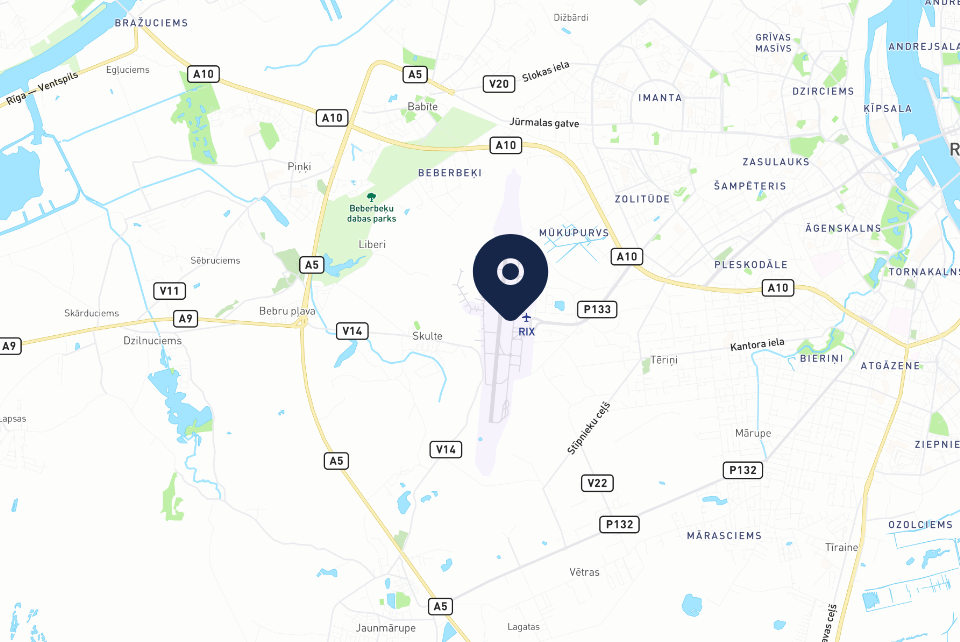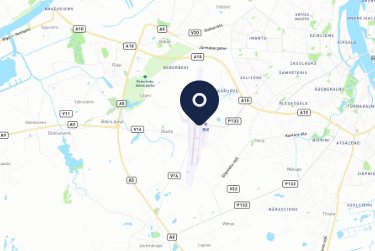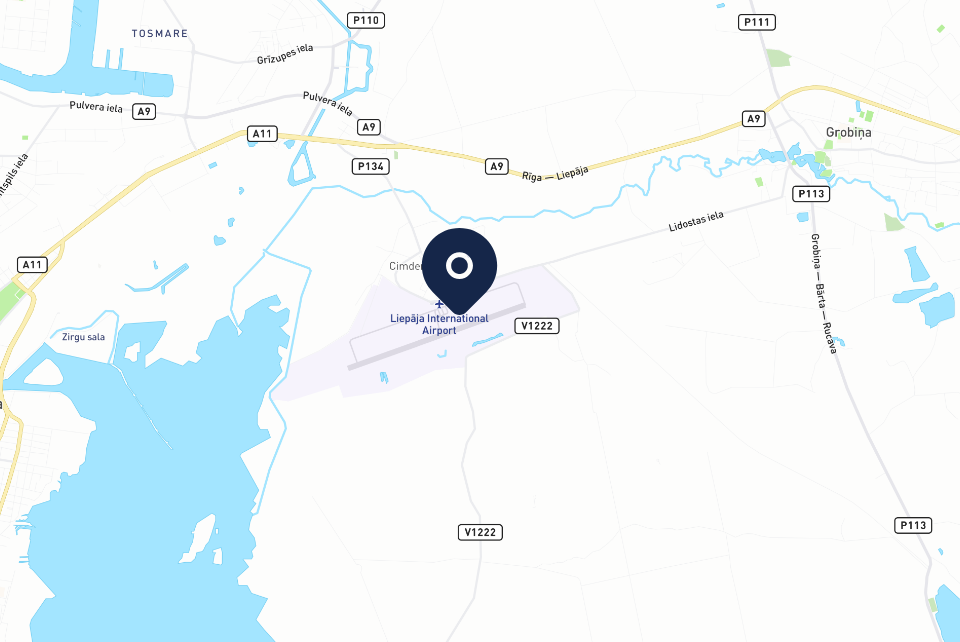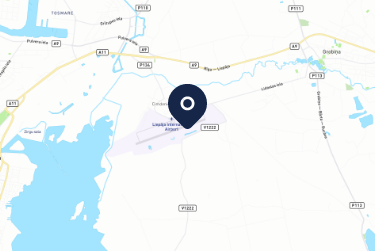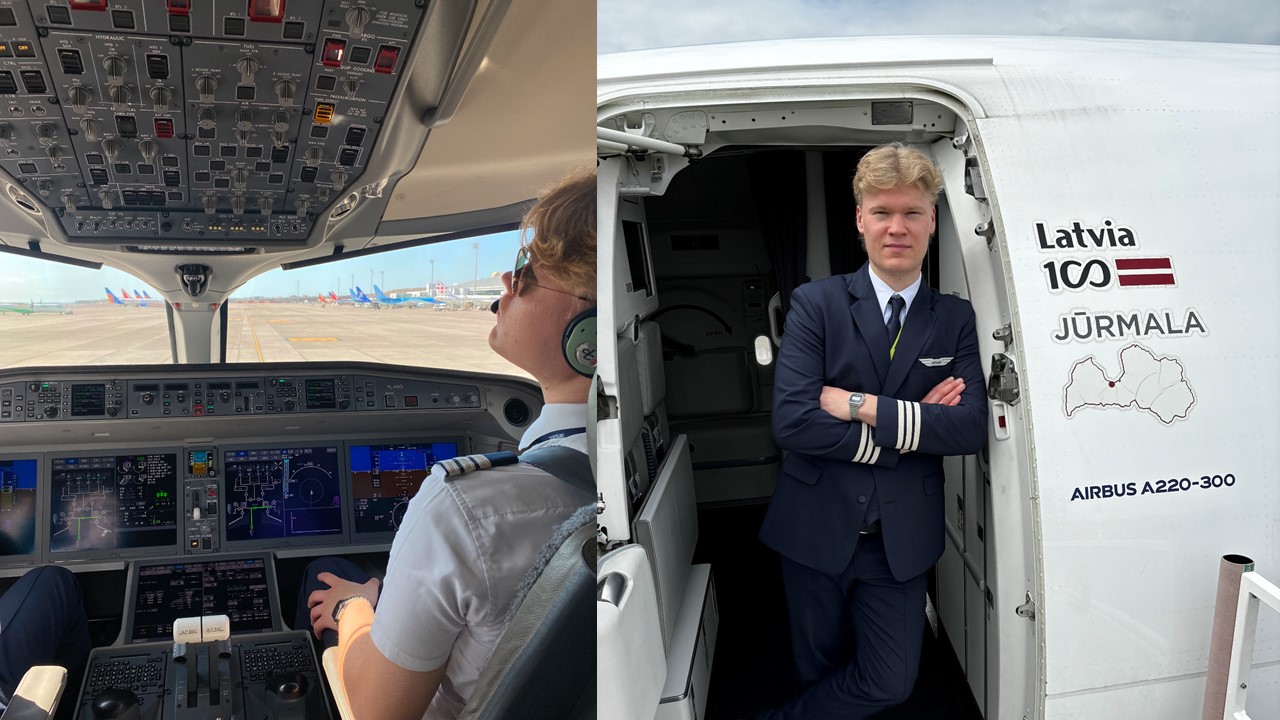
Baltic Outlook introduces you to some of the most important people at airBaltic – its flight crew members, who have some of the most interesting hobbies.
HOBBY
Aleksis Štēbelis has had a passion for ice hockey since the age of 13. By then it was too late to hope for a professional career in the sport, but that didn’t stop him from playing hockey for fun. His whole family are hockey fans and have always followed the Latvian national team’s games. ‘There was always someone watching hockey at home, and I always had a friend or two playing hockey,’ he says. There’s an ice rink in the Majori neighbourhood of Jūrmala just a few minutes from Aleksis’ house, and since he began training there, it’s become a way for him to have fun and disconnect from work.
‘When I’m on the ice, I don’t think about anything else,’ Aleksis says. ‘It was quite difficult at first, especially because I had to work on skills that most of my teammates had already learned as kids. But at some point our levels evened out and hockey became more than just having a good time; we actually started solving situations together.’
‘The sport has something in common with my current profession,’ he continues, ‘because on the flight deck we’re also a team and we do tasks and solve problems together. Likewise, when I first entered aviation, my colleagues had already been practising and developing their skills for years, but I was new in that environment. And, just like in hockey, pilots need to be able to make quick decisions that are in the best interest of the whole team. Hockey players also need to follow everything that’s going on, always with 100% focus on what they’re doing.’
As a teenager, Aleksis had hockey practice five times a week after school as well as games and tournaments in Latvia and abroad. There they could assess the level of their peers. ‘It was interesting to see the different styles of play in different countries, even at that age. For example, the Swedish teams have always been fast,’ he laughs.
HOW IT ALL BEGAN
Aleksis was inspired to become a pilot by his sister Elīna, who became a pilot a few years before he did. Before that, she worked in the marketing department at airBaltic. During high school, Aleksis spent a year in Dayton, Ohio, in the United States through an exchange programme – a city that’s closely linked to aviation history. ‘At that point, I still didn’t know what I wanted to study after high school,’ he says. ‘But just then my sister announced that she had enrolled in the airBaltic Pilot Academy. It was a big surprise in our family, because none of us had ever been involved in aviation.’
While in the United States, Aleksis and his host family visited the National Museum of the U.S. Air Force, where the technology on display, although 40 and 50 years old, piqued his interest. ‘Back then, it seemed like aviation was all around me, and I decided to follow in my sister’s footsteps and become a pilot,’ Aleksis says.
Pilot training is not easy. ‘There’s a lot of information to learn in a short space of time. But you just have to do it – you simply need to get down and learn,’ Aleksis explains. It’s a test of character, but it’s also a test of how much one really wants to become a pilot. He says the biggest challenge at first was learning how to learn and also how to sift out the most important information from what can be left in the background.
Aleksis has been flying professionally for just over a year now. He says the experience has been very interesting – he’s had very exhilarating flights but also some very tiring flights. ‘If you know the airport you’re departing from – such as Riga, Tallinn, or Vilnius – then, with rare exceptions, it’s mostly routine until the moment you release the parking brake,’ Aleksis says. ‘Everything that happens after that is completely different every day. It’s a bit paradoxical – on the one hand, being a pilot is a job that requires adhering to a strict routine, but on the other hand, you need to be prepared for changes, unusual situations, switching gears and communicating with the people around you, whether they’re colleagues, passengers, or the controllers in the air traffic control tower. A pilot needs to think about the big picture as well.
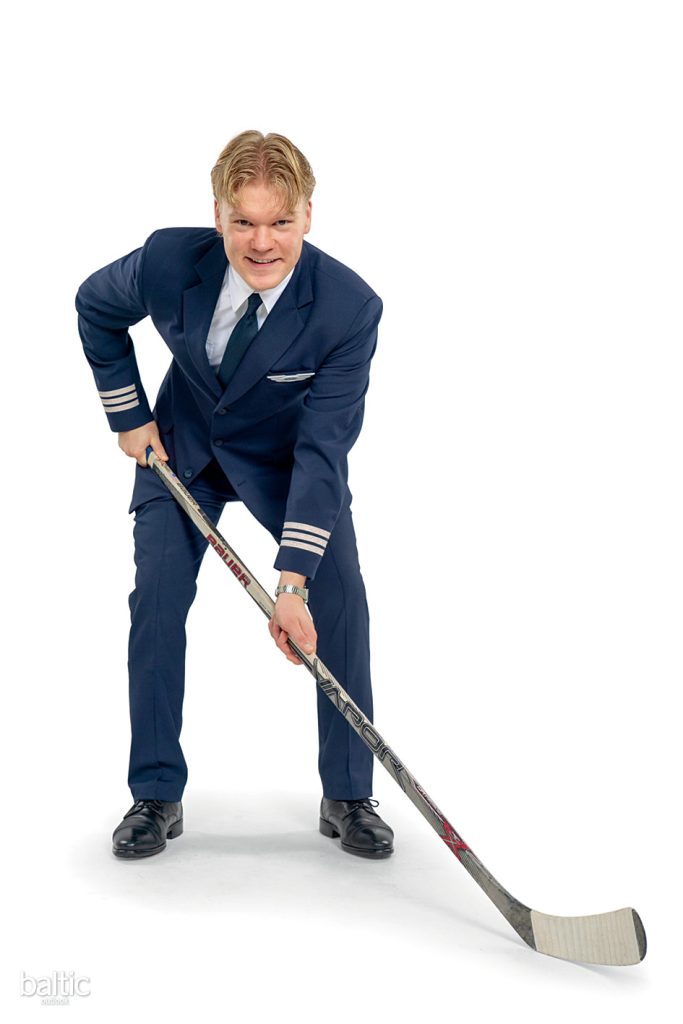
Words by Ilze Pole
Photo by Kaspars Krafts (Picture Agency)
